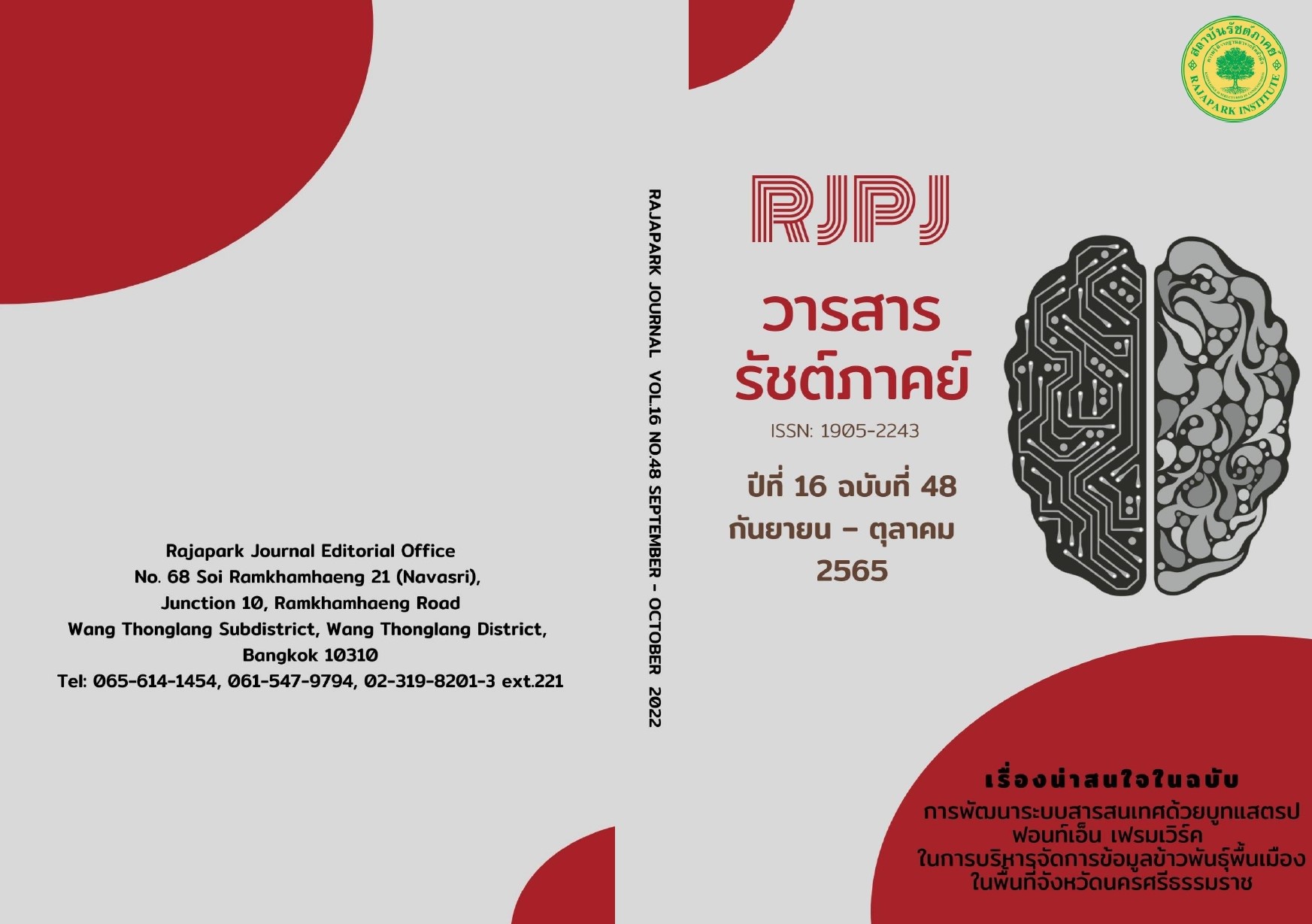Behavioral Financial and Loan Repayment Plan on Student Loan Fund: Case Study in Borrower’s Pibulsongkram Rajabhat University
Main Article Content
Abstract
This article aimed to study the nudge theory test and loan repayment planning guidelines and to study and analyze factors influencing the repayment planning of student loan fund. This research using behavioral economics experimental tools by Nudge Theory test. The research results were found as follows: experiment with nudge to provide positive and negative information for the experimental group. The efficacy of the positive experimental group was 87.78% and the efficacy of the negative trial was 83.33%, while the control group was free of any intervention. It was found that there was a savings of 80.00% when offered to join the project with the National Savings Fund. Nudge using default option can increase all groups. The Logit model analysis revealed that the factors influencing the repayment planning of the Student Loan Fund were gender and the experimental group negative data, which was statistically significant level at 0.05. While, grades and the using Default Option, which was statistically significant level at 0.10. So, Nudge Theory can motivate to saving of individuals and powerful effect on change behavior to more saving.
Article Details

This work is licensed under a Creative Commons Attribution-NonCommercial-NoDerivatives 4.0 International License.
Views and opinions appearing in the Journal it is the responsibility of the author of the article, and does not constitute the view and responsibility of the editorial team.
References
Aiamla-Ong, P. (2017). Thai Student Loans Allocation and Repayment[Doctoral Dissertation, Claremont Graduate University].
Almenberg, J., & Save-Soderbergh, J. (2011). Financial literacy and retirement planning in Sweden. Journal of Pension Economics & Finance, 10(4), 585-598.
Bhanot, S. P. (2017). Cheap promises: Evidence from loan repayment pledges in an online experiment. Journal of Economic Behavior & Organization, 140, 246-266.
Cholpaisal, A. (2016). Under-Saving Behavior, Time Inconsistency and Financial Literacy. Suthiparithat Journal, 30(94), 60-67.
Cole, S., Sampson, T., & Zia, B. (2009). Financial Literacy, Financial Decisions, and the Demand for Financial Services: Evidence from India and Indonesia. Harvard Business School.
Falahati, L., & Paim, L. H. (2011). A comparative study in money attitude among university students: a gendered view. Journal of American Science, 7(6), 1144-1148.
Goldsmith, R. E., Goldsmith, E. B., & Heaney, J. G. (1997). Sex differences in financial knowledge: A replication and extension. Psychological Reports, 81(3_suppl), 1169-1170.
Jantanukul, W., & Kenaphoom, S. (2018). Student Loan Fund: Causes of Defaults for Repayment of SLF. Humanities and Social Sciences Journal Ubon Ratchathani Rajabhat University, 9(2), 123-130.
Jones, L. E., Loibl, C., & Tennyson, S. (2015). Effects of informational nudges on consumer debt repayment behaviors. Journal of Economic Psychology, 51, 16-33.
Kosters, M., & Van der Heijden, J. (2015). From mechanism to virtue: Evaluating Nudge theory. Evaluation, 21(3), 276-291.
Kahneman, D., & Tversky, A. (1979). Prospect Theory: An Analysis of Decision under Risk. Econometric Society, 47(2), 263-291.
Lachin, J.M., Matts, J.P., & Wei, L.J. (1988). Randomization in Clinical Trials: Conclusions and Recommendations. Controlled Clinical Trials, 9(4), 365–374. DOI: 10.1016/0197-2456(88)90049-9.
Lee, J. (2009). Racial/Ethnic Disparities in Household Debt Repayment[Doctoral Dissertation, The Ohio State University]. https://etd.ohiolink.edu/apexprod/rws_etd/send_file/send?accession =osu1244055120&disposition=inline
Lusardi, A., & Mitchell, O.S. (2005). Financial Literacy and Planning: Implications for Retirement Wellbeing. http://www.econ.yale.edu/~shiller/behmacro/2005-11/lusardi.pdf
Marx, B.M., & Turner, L.J. (2019). Student Loan Nudges: Experimental Evidence on Borrowing and Educational Attainment. American Economic Journal: Economic Policy, 11(2), 108-141. DOI: 10.1257/pol.20180279
Nawai, N., & Shariff, M. (2012). Factors affecting repayment performance in microfinance programs in Malaysia. Procedia-Social and Behavioral Sciences, 62, 806-811.
Pattamasiriwat, D. (2018). Human Capital, Occupational Choices, and Risk of Being Poor. Economics and Public Policy Journal, 6(11), 38-60.
Thai Student Loan Fund. (2022). Statistical Data of Thai Student Loan Fund. Thai Student Loan Fund. https://www.studentloan.or.th/en/home
Tversky, A., & Kahneman, D. (1981). The Framing of Decisions and the Psychology of Choice. Science, 211(4481), 453-458.
Ryan, J. D. (2017). To what Extent have the Policy Recommendations of the Behavioral Insights Team been in Accordance with Nudge Theory[Master’s Thesis, University of Twente]. https://purl.utwente.nl/essays/72273
Schwartz, S., & Finnie, R. (2002). Student loans in Canada: An analysis of borrowing and repayment. Economics of Education Review, 21(5), 497-512.
Suaysom, P., & Tangtammaruk, P. (2021). Behavioral Economic and Nudging Safer Road Behavioral in Thailand: The Case Study of Motorcycle Taxi Passenger[Master’s Thesis, Srinakharinwirot University].
Supanut, A., Tangtammaruk, P., Srisaringkarn, T., & Dumchuen, N. (2022). Using Nudges to Encourage the Use of Bio-plastic Bags through Behavioral Economics with Households in Bangkok. University of the Thai Chamber of Commerce Journal, 42(1), 23-35.
Tambunlertchai, K. (2018). Impact of Financial Education and Incentives to Save: A Case of Motorcycle Taxi. Chulalongkorn University.
Thaler, H., & Sunstein, R. (2008). Nudge: Improving Decisions about Health, Wealth, and Happiness. Yale University Press.
Untalan, T.S. (1996). Borrower Behavior and Loan Repayment in Group Credit[Doctoral dissertation, The Ohio State University].
Worthington, A.C. (2006). Predicting Financial Literacy in Australia. Financial Services Review, 15(1), Spring 2006, 59-79. https://ro.uow.edu.au/commpapers/116/


